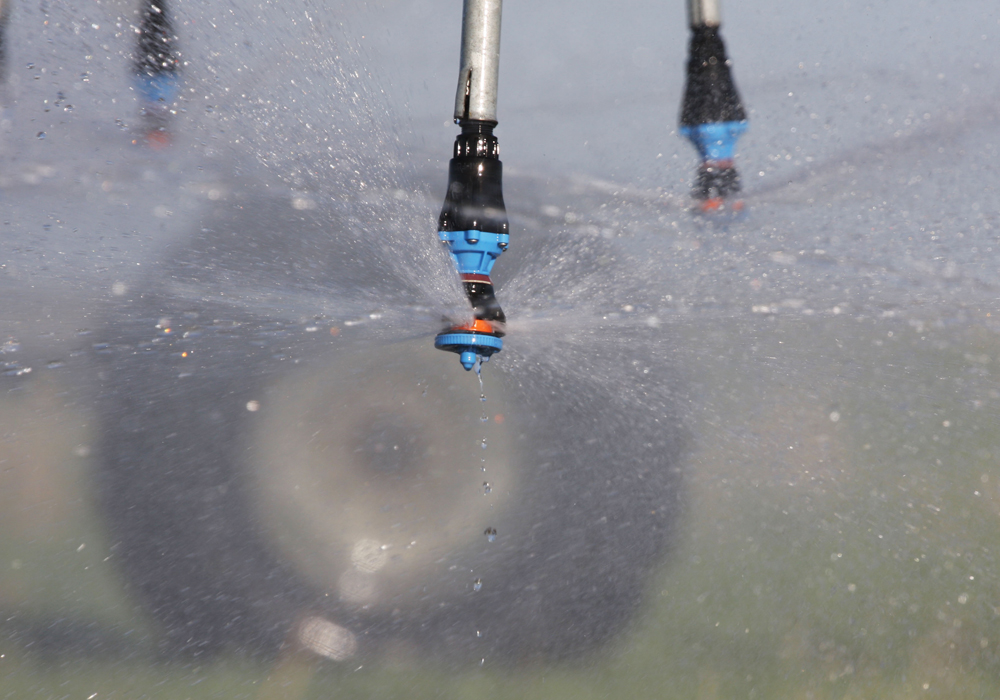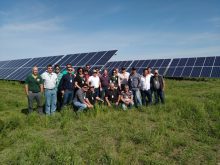The Saskatchewan government and four irrigation districts have completed asset transfers and agreed to infrastructure funding arrangements.
The deal moves about 90 percent of provincial irrigation assets into the hands of the district irrigators, said deputy agriculture minister Rick Burton.
The transfer has been contentious at times because irrigators said they didn’t want assets that were in poor repair and would put them millions of dollars in debt to fix.
Burton said the districts were responsible under legislation to collect replacement funds.
“But they weren’t paying sufficient funds into the replacement fund previously to actually make sure that there was funds on hand to deal with replacements when they needed them,” he said.
Read Also

Farming Smarter receives financial boost from Alberta government for potato research
Farming Smarter near Lethbridge got a boost to its research equipment, thanks to the Alberta government’s increase in funding for research associations.
The transfers include five-year funding arrangements through the irrigation infrastructure rehabilitation program.
“That’s the program where they put in up to $21 (per acre) and it can be matched two to one by government,” he said. “Governments are making an investment in irrigation. It is a good investment for government, but this is a little bit about catch up.”
Three districts will also receive money through an infrastructure program under the Canadian Agricultural Partnership.
The districts involved are South Saskatchewan River, Riverhurst, Luck Lake and Moon Lake.
SSRID is the largest and will receive more than $8.9 million for rehabilitation from the province. The district irrigators will have to put $15 per acre into the fund in the first year, $21 in the second and fifth years and $24 in years three and four.
Irrigated acres are expected to range from 39,660 in the first year to 45,500 by the fifth year.
Riverhurst district irrigators will pay a flat $21 per acre each year on acreage from 18,265 to 22,000, while the provincial funding totals $4.2 million.
Luck Lake will get just more than $2.8 million over the five years while contributing $21 per acre each year on 11,705 acres and up to 14,946 acres.
The smallest of the four districts, Moon Lake, is expected to remain at 2,828 irrigated acres each year of the agreement. Irrigators will contribute $59,388 per year and the government contribution will be double that for a total of $593,880.
Engineering reports contained in the transfer documents indicate the costs to repair the assets will far exceed the amounts collected in the rehabilitation funds.
The capital cost to repair and replace the assets in SSRID is estimated at $151.36 million.
Joel VanderSchaaf, past-chair of the Saskatchewan Irrigation Projects Association, has said the districts would prefer to see longer-term funding than just five years to address these deficits. Irrigators also believe government should maintain irrigation infrastructure the same as it does highways because of the widespread community and provincial benefits.
Meanwhile, the funding under critical infrastructure is for SSRID to address about 200 road crossings over open canals. Burton said it was never clear whether rural municipalities or districts owned the crossing and were responsible to maintain them.
“Going forward, the full amount of any of the road crossings will have to be borne by the districts,” he said.
In Riverhurst and Luck Lake, the extra funding is to address concrete pipe that was installed in the 1980s.
Burton said the saline soils in the region contribute to premature failure of that pipe. Normally, pipe should last 50 to 60 years.
Contact karen.briere@producer.com


















